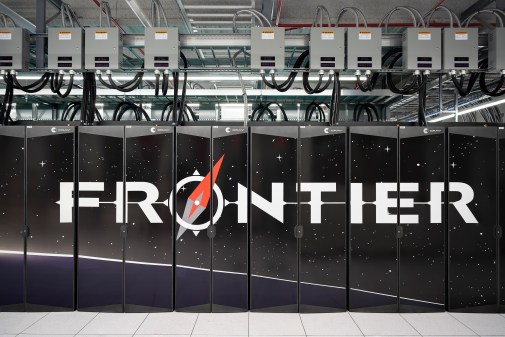 The inside of AMD’s Spider system is shown. AMD is working with the Department of Energy on exascale computing. (cc-licensed Anne Jacko | https://flic.kr/p/4yEgFP )
The inside of AMD’s Spider system is shown. AMD is working with the Department of Energy on exascale computing. (cc-licensed Anne Jacko | https://flic.kr/p/4yEgFP )When techies think about Sunnyvale, California-based Advanced Micro Devices and the company’s graphics processing units, the first thing that often comes to mind is their integration in the top video game consoles on the market. However, AMD’s Chief Technology Officer Mark Papermaster is ready to show the government how the company’s GPUs can do so much more.
“Ninety-nine-point-nine percent of people think of graphics as video games, rendering images on the fly and creating interfaces,” Papermaster said during a recent interview with FedScoop. “What has us excited is those same graphics engines do computation on those graphical images so you can analyze them.”
A long-time heavyweight in the graphics space, AMD has been working with the federal government on utilizing the power of their GPUs as the company has been going through what Papermaster calls a “reset and restructure phase,” as consumers and enterprise customers move away from PCs.
Papermaster said AMD’s GPUs can go further than just rendering images by giving programmers and developers the hardware needed to actually recognize what is happening in a photo or video without having to rely on software for tags.
“You can imagine any application, say augmented reality, where you need to go into a situation and recognize images and faces of who is at the table, recognize friend or foe, recognize different terrains,” Papermaster said. “The interesting thing is that computation to recognize. Machine learning is a very high graphics computation.”
Alan Lee, AMD’s vice president of research, said computation power allows government and industry to leverage a host of different computing functions, like graph and search algorithms.
“Visualization is important, but it’s going to affect everything from modeling and simulation, which is a huge part of these capabilities, through the actual generation of different graph algorithms and floating-point scientific algorithms,” Lee said.
The work underscores a number of projects the company is working on with the federal government, including the Energy Department’s DesignForward program, a exascale computing initiative that will eventually be able to complete 1 quintillion — a 1 with 18 zeros following it — operations per second. While trying to reach that benchmark, the company is also coming up with ways to make supercomputing cheaper and more energy efficient.
“We could build an exascale system today, but it would basically require the same amount of power used to power a small city,” Lee said. “It doesn’t really work that way and nobody could program it.”
The company has been working with the Energy Department for a number of years, including work done on Oak Ridge National Laboratory’s Titan supercomputer. As the company fine-tunes the processing power associated with supercomputing, it also creates ways for the both AMD and the government to save money.
“As it turns out, in a mega-data center environment, the cost to power it exceeds the cost of the system in a small number of years,” Lee said. “Therefore, it’s good for AMD, and it’s good for the government to pursue these very low-power, high-performance alternatives.”
Papermaster said those discoveries then trickle down throughout the rest of the government and give the company the chance to move past its reliance on PCs.
“Our view is very simple,” he said. “As we work with the government on the next generation of exascale, we’re not confused. That is the technology of the next generation of what is commercially available to data centers.”




